
Tech Innovation Day 🇳🇱
I have come to understand strategic thinking as more art than science. Strategy is surely informed in part by data, but I find that our society in general and the technology industry specifically too often confuse data and wisdom, that we foolishly (though understandably) seek heuristics or processes so that we can turn the art of strategic thinking into a game of color by numbers so simple that anyone can do it. When it comes to strategic thinking, better that we seek methods of framing our thoughts rather than shortcuts to the answers themselves. This session offered practical approaches to injecting strategy into your organization’s Microsoft Cloud journey, indeed, a selection of the same approaches I take with my clients. We also explored a brief history lesson concerning the Dutch colony of New Amsterdam…
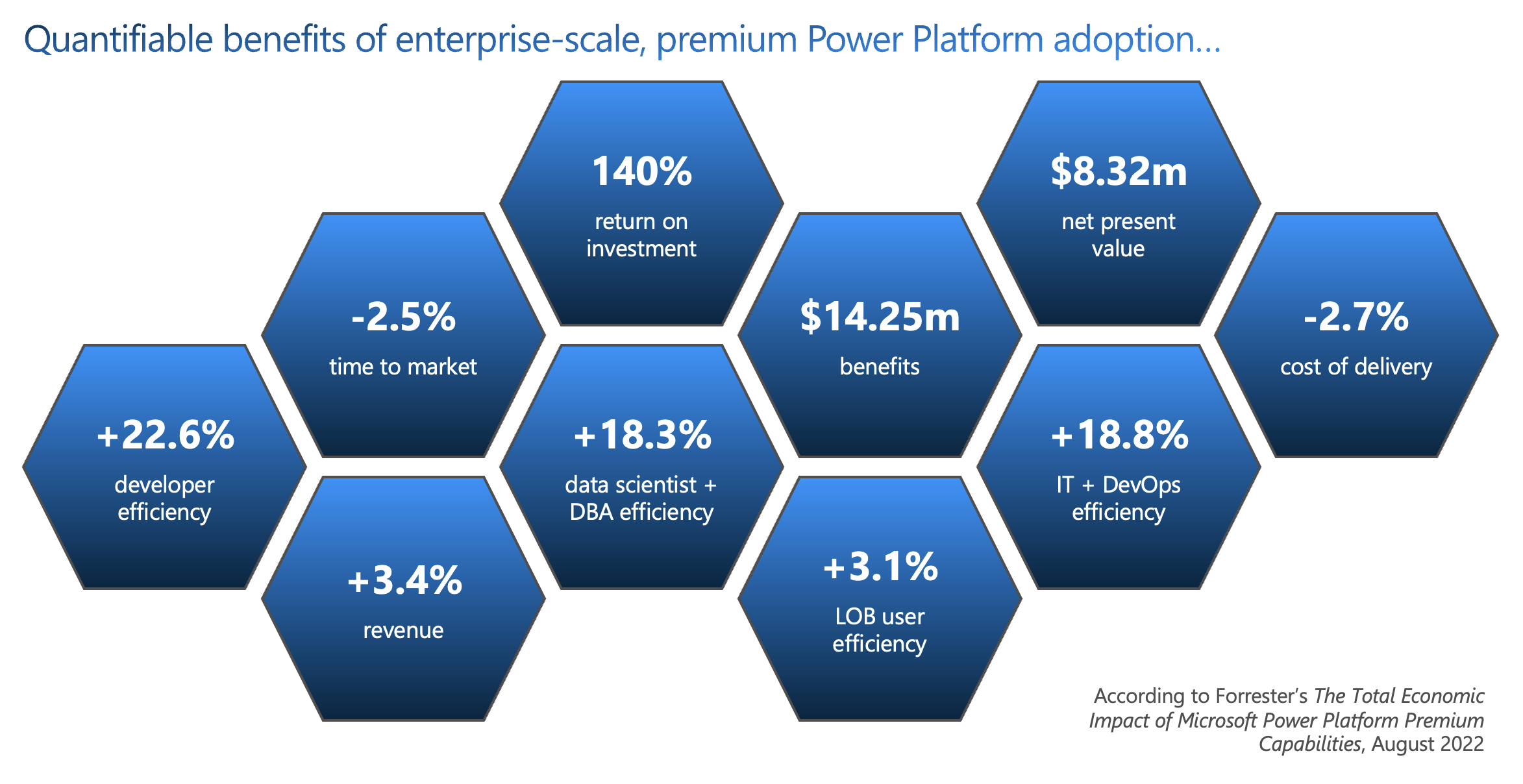
The “Tyranny of the Deliverable”, and other short stories about why you’re struggling to realize big value with Power Platform
Too many organizations are still struggling to go big with Power Platform not because of limitations in technology, but because of their own outmoded ways of doing business, though I know of no other move that IT decision makers in organizations across the economy and around the world can make that is likely to achieve results of this magnitude by—in effect—doing more with less. But the benefits of adoption are often dampened by three big, non-technical reasons that I see so many organizations failing or underperforming in their scaled, enterprise Power Platform adoption.
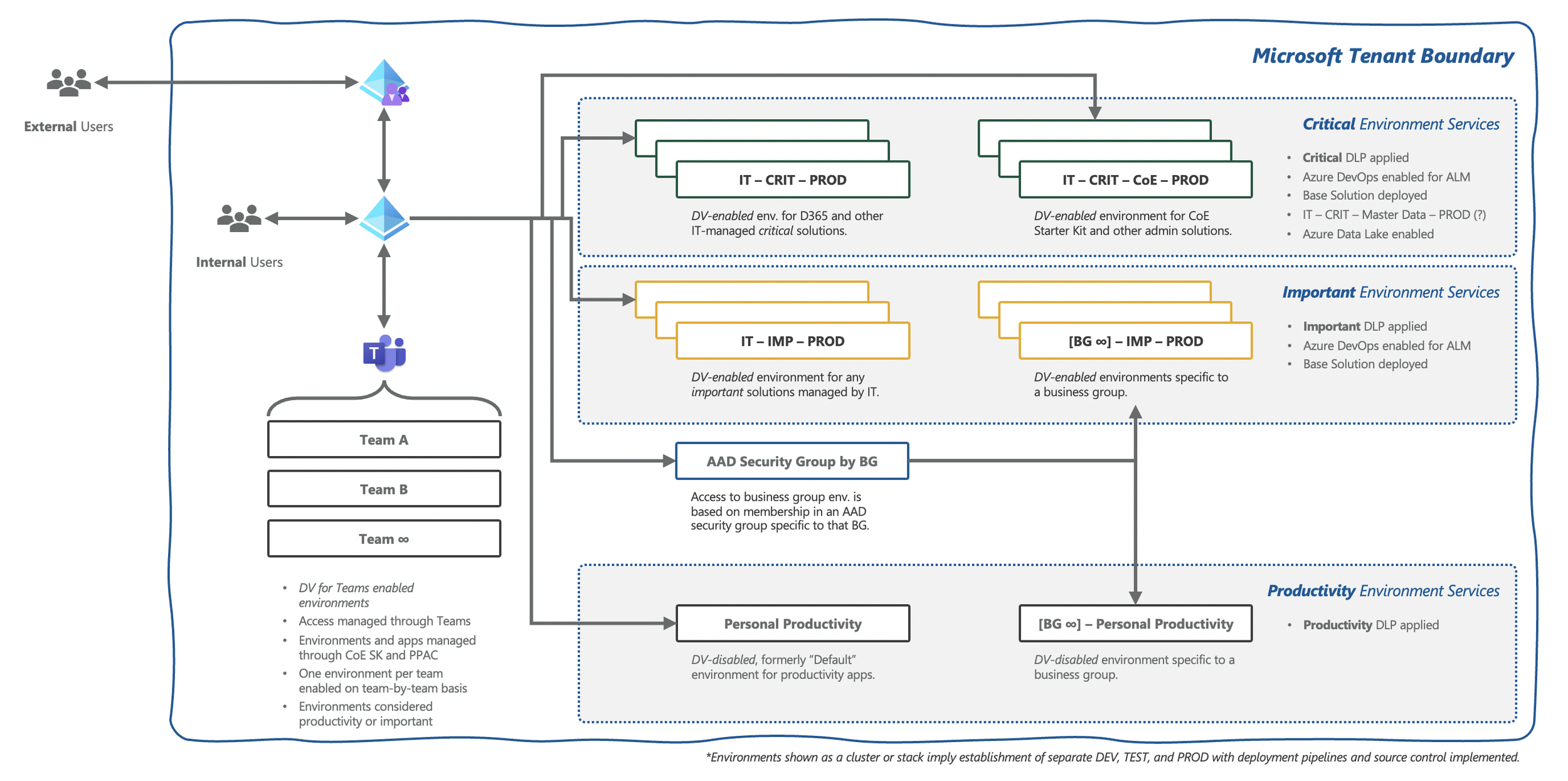
Reference Architecture for the “Landing Zone”, your indispensable foundation for scaling Power Platform
The Power Platform Landing Zone is the beginning of the path to overcoming these barriers. A foundation, if you will, the Landing Zone is the initial technical infrastructure plus governance of that infrastructure that allows an organization to begin “landing” workloads in Power Platform. With that in mind, a while back I set out to create a reference architecture for a Power Platform Landing Zone. In other words, if an organization were to build their Power Platform infrastructure properly, it would look a lot like this reference architecture.
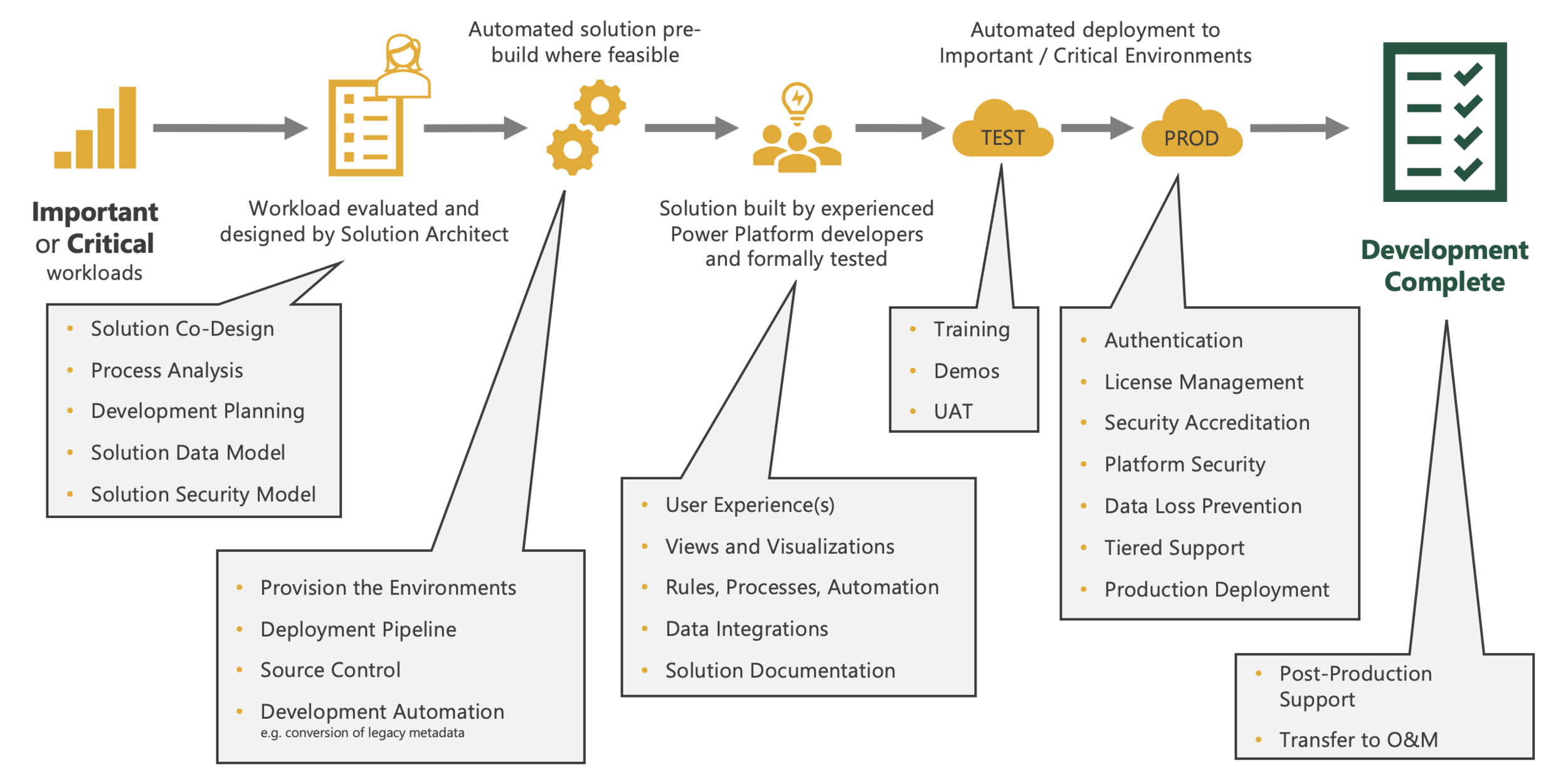
A Common (project) Framework for Solution Development with Power Platform
Here we’ll lay out a common framework (which we’ll refer to as “C-Frame”) for managing Power Platform solution development. This approach is best suited for solutions that classify as important or critical according to the Environmental Architecture Model found in the Power Platform Adoption Framework. If you take nothing else away from this approach, let it be this: Solution development of important and critical workloads produces far better outcomes and is significantly easier to manage when your team has in its own way accounted for all of these project activities.
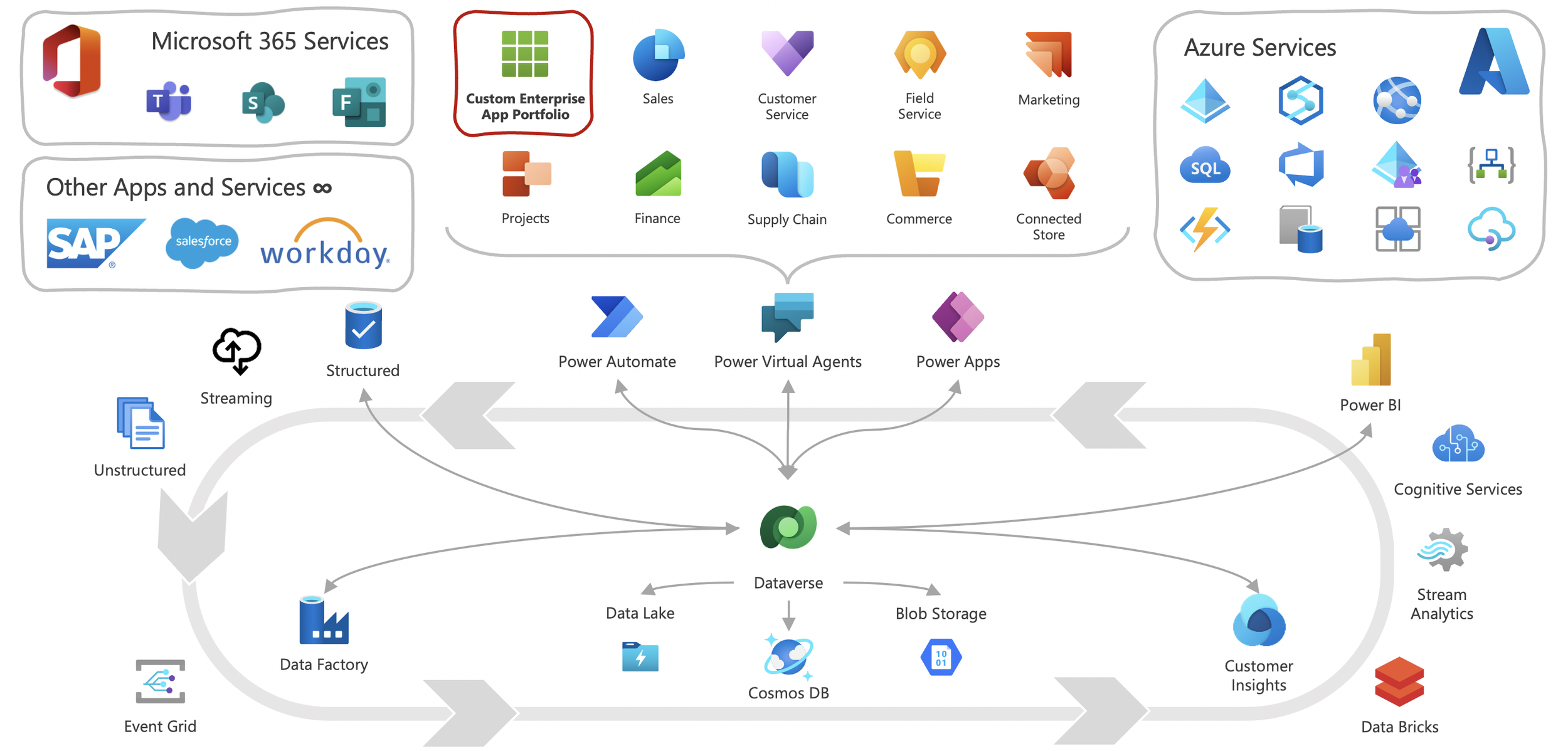
The Cloud Application Platform Era is a seismic, generational transition for cloud technology
We are experiencing a seismic, generational transition in the way that organizations buy, use, and enable their own success via technology. We’re now living in the Cloud Application Platform era, wherein organizations plan more strategically, make technical choices today that reduce the risk of being painted into a corner tomorrow, absorb new requirements rapidly, better fix costs across their ecosystem, and buy down the risk of unknown future needs. That’s what the Cloud Application Platform is all about.
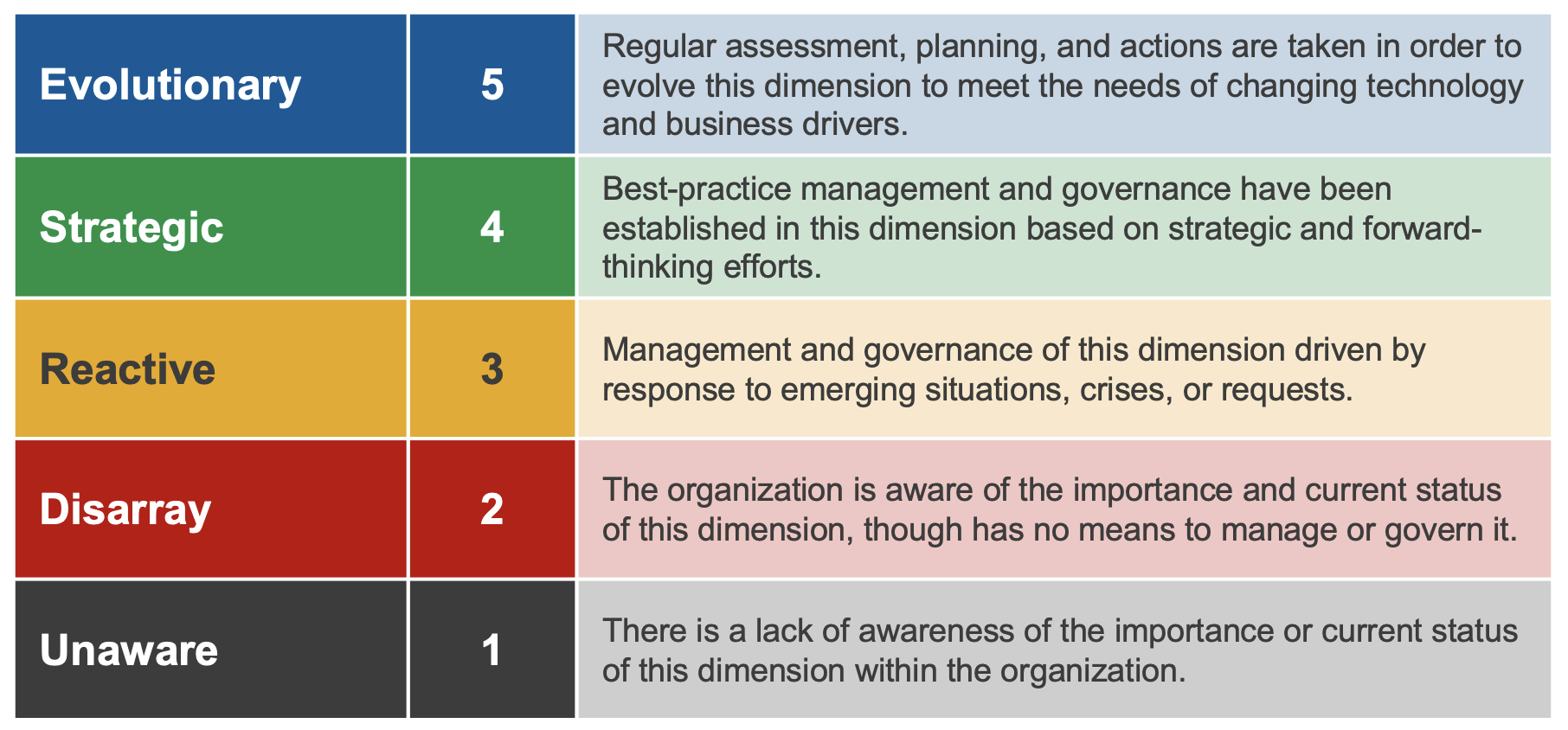
Assessing the maturity of your Power Platform enterprise management and governance
Organizations must continually mature their Power Platform enterprise management in order to unlock the platform’s value as a first-class cloud application platform and scale it over time. The Enterprise Management Maturity Model is the common standard that can be applied across the platform (and extended across the Microsoft Cloud as well) so that we may assess the maturity of enterprise management and governance, evaluate where an organization has made progress and remains less mature, and identify both organizational risk and opportunities to generate new business value.

One Thousand Workloads: How your Roadmap maximizes Power Platform investment
The workload Roadmap is an indispensable part of an organization's ongoing Power Platform adoption. It is a prioritized backlog of workloads that are candidates for migration to or new solution builds on the platform. It allows the organization to project the technology's business value over time, and is the core driver of return on investment in the platform. Here I’ll share the strategy for working directly with business owners, users, and IT to identify, prioritize, and categorize candidate workloads and to create a roadmap for building those workloads on the platform.

Power Platform in a Modern Data Platform Architecture
I’ve been thinking quite a bit lately about Power Platform as one of the three principal components of the one Microsoft Cloud, alongside Azure and Microsoft 365 of course. This is particularly important in more complex data ecosystem, one of the enterprise management dimensions you’ll find in the Power Platform Adoption Framework. So I want to expand on the “data ecosystem” concept with the idea that modern data platform architecture is a wheel or a cycle (rather than a linear flow), particularly when Power Platform solutions are leveraged (and they should be).

A Church is Burning
Tomorrow, millions of Americans will cast votes that will determine if we are to carry on living in our poverty of true and decent leadership. They will join millions of their fellow citizens who have already done so in defiance of plague and often of their own government, deciding if we are to live in a world where military strength is matched by moral restraint, wealth with wisdom, power with purpose. May your vote be an act of shedding the illusions and naïveté that once held us back. Of reclaiming the innocence, imagination, faith, generosity, pride, and friends we have lost. The future is now, and it’s time to take a stand so that the lost bells of freedom can ring out in our land. You can burn down my churches, but I shall be free.
Reflecting on Microsoft Ignite 2020: Five big strategic takeaways for Business Applications
This is the year that low-code cloud transformation goes mainstream. With that I’ll also share my top five reflections on Ignite from a cloud strategy perspective. Joe Griffin has got a great top five at a more detailed feature-by-feature level on his CRM Chap blog, and I also recommend you give a listen to Lisa Crosby’s and Megan Walker’s “Microsoft Ignite Session Recommendations“ on The Up Podcast (which, incidentally, needs to be part of your regular listening).

Seeking your contributions to what’s next for the Power Platform Adoption Framework
Lee Baker, Lucy Bourne, Manuela Pichler, Keith Whatling, and I recently put together seven major themes that we plan to address in the framework over the next six(ish) months. We’d like to share them with the community and ask for your contributions. Each of the themes listed below direct links to their milestone page on GitHub, where you can contribute your ideas, thoughts, approaches, etc. by creating new “issues”. You can also join us in open discussion of all our open issues at this link.
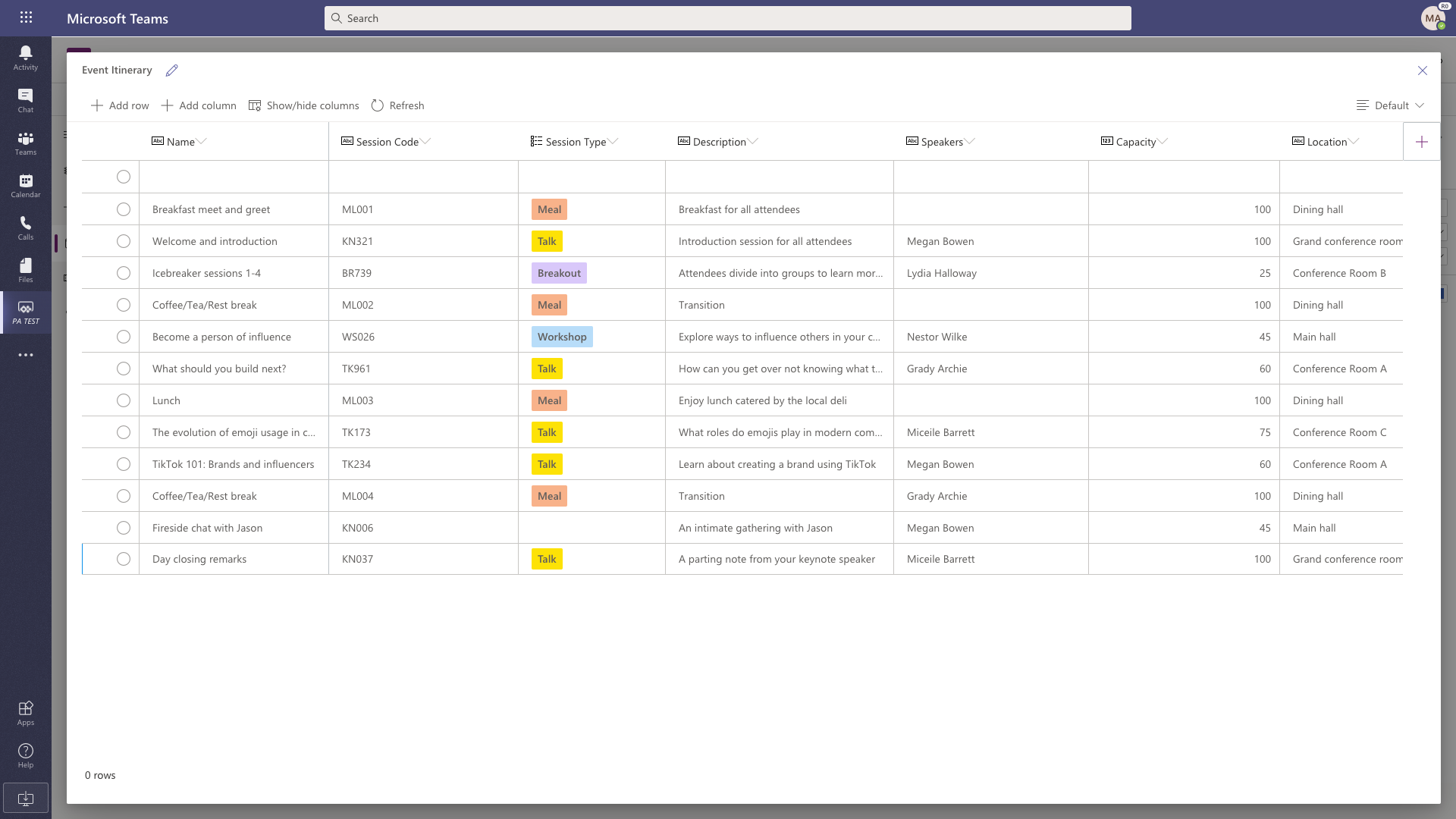
Four things to know and five things to do following the big Microsoft Dataflex + Teams announcement
Today’s public announcement of new Microsoft Dataflex and the re-branding of the former “Common Data Service” (CDS) as Microsoft Dataflex Pro is one of—if not the—most profound Microsoft product evolutions of 2020. There will be significant discussion and work on this in the weeks and months ahead, but for now I’d like to help folks contextualize this new development by asking two questions: What should I be thinking big picture with the launch of Microsoft Dataflex, and what should I do next to make sure my organization is ready?

A love letter to my team, Microsoft Partner of the Year for Power Apps and Power Automate
I am beyond excited to share that Applied Information Sciences (AIS) has been recognized as the Microsoft worldwide Partner of the Year for Power Apps and Power Automate. Permit me a brief love letter to my team… Emily Cartner is our solution architect who led the team behind a lot of what made this award possible. The rest of the group, too: Whether in India, Europe, or the United States, this business applications team is the world’s best. I am so grateful that these brilliant people (current and future) all choose to direct their talent and passion in the direction of our—and our clients’—collective success.

America was supposed to be about content of character, not birthright
I was heartened by 4th of July well wishes from two of my fellow Americans. One is Russian. The other is Irish. Both are now also American—yes, both are celebrating their first Independence Day as American citizens. I was grateful for their reminders of hope in dark times. They’ve also inspired me to share nearly the entirety of Chapter Five of Field Blends (below) in which the core group of characters find themselves out in Virginia’s wine country debating the essence of what it means to be American 🇺🇸

We are living through generations’ failure to have created something better. Now America burns as the world weeps, and it is for us to put out the flames.
My generation, the “end of history” kids, came of age at the dawn of the era of the things which might have been. And all their trials and terrors and ghastly wonders. All the things which our ancestors might have wrought but would never have lived to see. And we live among it now, and it is us, and we are that which they made in their own eras of wonton foolery.

On “being local”, the terroir that—like food and wine—imparts unique character to us all
Field Blends is a story that both revels in localness—everything occurs in real-world places—and wrestles with the idea of home. These are such important questions, and they form part of why I used wine as a metaphor throughout the story. For wine—and all the rest we eat and drink—like people, is fundamentally rooted in place. Though often exported and passed around the globe, wine is a reflection of the terrain in which its grapes grew, the climate that surrounded it and the hands that tended it when it was young.
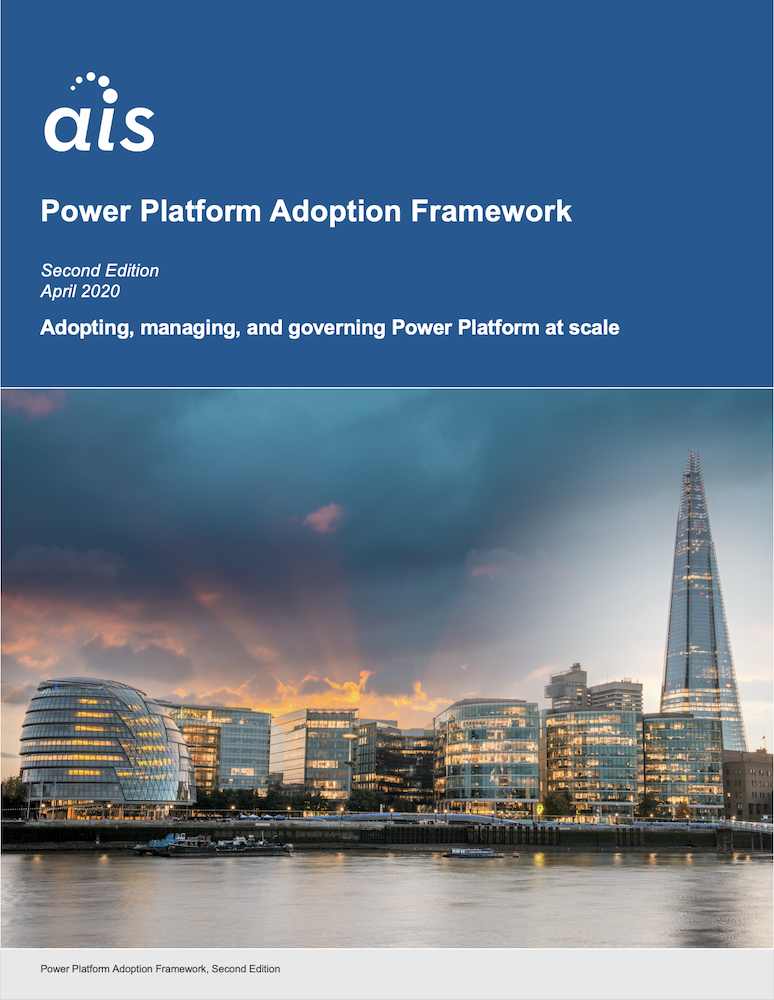
Sharing the Power Platform Adoption Framework's second edition
Today we’re releasing the second edition of the Power Platform Adoption Framework. We're introducing some new ideas—and new ways of thinking about existing concepts—as we enter the Power Platform Adoption Framework's second year. As a "framework", we're committed to broadly applicable best practices for adoption at scale, not to being a technical manual.

Bespoke Badger is quarantine at its best: Ten tips for making your virtual pub a great success
The Bespoke Badger is next level. It is quarantine—and the world—at its best because it brings people together over drinks, laughter, and serious talk in a way that I would have never imagined virtually possible six weeks ago. These are my observations as to how others can build similarly special virtual spaces with friends, family, colleagues, and strangers. The secret here is in creating virtually the same sense of community that we’ve long created in the physical world.

Power Platform is a First Class Citizen in the Cloud Transformation + App Modernization journey
That’s what low-code cloud transformation and app modernization is really about: Harnessing the “65% Opportunity” with Power Platform as a first-class citizen for business applications amongst Microsoft’s “Three Clouds”. So what's driving this? And — perhaps more importantly — how do we do this at scale? How do we migrate one, two, or ten thousand workloads to Power Platform?

Millennials began turning 40 this year (and why that matters)
That the oldest are now turning forty is important not just because it must auger the end of an era when Millennial was a byword for the young, but also because it must auger the beginning of an era when this generation’s leadership in the world is a thing of the present. That era is here and now, not some distant time in the future.

